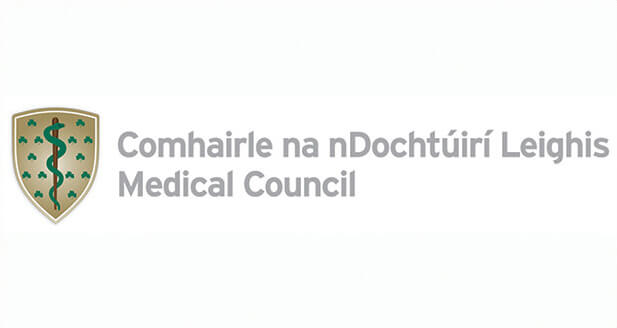Publication: Irish Examiner Feelgood
Date: Friday, September 21, 2012
By
John Hearne
Men who struggle with going bald have now more choices to alter their appearance, John Hearne reports
BLAME it all on prostaglandin D2. This is the renegade enzyme which research suggests is responsible for instructing follicles to halt the production of hair. Fingered as the culprit in a research paper published in a US science journal earlier this year, the race is now on to turn the science into dollars.
Dr George Cotsarelis is head of dermatology at the University of Pennsylvania and a leading light in the pursuit of his particular version of the philosopher’s stone – that semi-mythic material that can transform bald domes into heads of thick, wavy hair. Right now, he’s in discussions with pharmaceutical companies to develop a drug which would block the damaging enzyme.
Meanwhile, in Japan, they’re giving the hairless hope with stem-cell treatments. Researchers at the Tokyo University of Science have already showcased a hairless mouse sporting a Mohawk kindly donated from the stem cells of a more hirsute rodent.
However, consultant surgeon Dr Maurice Collins of Hair Restoration Blackrock, is not enthusiastic. “This is not a breakthrough,” he says of a potential prostaglandin D2 blocker. “This is just another step in the development of a treatment.” He says various anti-prostaglandins have already been developed, and there is no evidence that any of the result in hair.
And the mouse? What happens with mice doesn’t necessarily translate to humans? “My personal view is that when the scientists who are working on stem cell research start producing hearts, livers and kidneys in labs, then hair is another organ that they may develop. The fundamental research has yet to be done.”
Men have, of course, been dealing with hair loss and its associated problems for thousands of years. There’s evidence that wigs were used by the ancient Assyrians 3,000 years ago, while an Egyptian papyrus dating from 1550 BC includes the oldest known prescription for dealing with baldness; a mixture of onions, alabaster, honey, red lead and the fat of a hippopotamus. In Victorian England, a popular treatment involved rubbing Indian tea into the scalp, followed quickly by the vigorous application of fresh lemon juice.
Though the dubious remedies are still there if you look, the science around hair loss has evolved considerably in recent years.
“The first thing I say to patients when they come in is that there are four things you can do,” says Dr Collins. “One, you can cut your hair short, accept your hair loss and get on with your life. The second is medicine, the third is surgery and the fourth is a combination of surgery and medicines.”
There is, of course, a long list of A-listers who’ve embraced their baldness and have seen their sexual capital go through the roof as a result. No one could accuse Sean Connery, Tupac Shakur, Bruce Willis or Vin Diesel of losing anything else when they said goodbye to their hair, while Patrick Stewart of Star Trek fame frequently features in TV’s sexiest man polls.
The reality is that most of us don’t look good bald. Moreover, the process of losing your hair can be devastating for a man.
Actor James Nesbitt admitted that his hair loss had reached the point of obsession before he went to see Hair Restoration Blackrock. Nesbitt had two transplants, and has also used drugs to limit any further loss. In interviews, he’s admitted that the results have changed his life.
Louis Walsh also went public when he had hair transplant surgery, saying that he sought help after a fellow X-Factor judge laughed at his thinning locks. Walsh has described the procedure as ‘maintenance’.
Also, Manchester United player Wayne Rooney made no attempt to hide his decision to get a hair implant last year when he announced to his 770,000 Twitter followers: ‘I’ve had a hair transplant. I’m delighted’.
Allison Keating, a psychologist with the bWell clinic in Dublin, points out that culturally, hair has always been associated with youth, virility, attractiveness and good health. “Losing your hair is going to affect your body image and that in turn will affect your self-image because how you view yourself has changed. Then if people are saying what you actually fear to your face, it’s basically manifesting that fear into reality. So, at a social level, your functioning can actually be inhibited, people get a bit more embarrassed or shy.”
We see a lot of young men who are distraught,” says Collins. “ We put them on the medicines and the medicines work brilliantly. That can tide them through the vulnerable phase and often times after four or five years they say to us, ‘I’ve got over the hang-ups, I’m going to stop the medicines and cut my hair short.”
There are two clinically proven treatments for hair loss available in Ireland. Minidoxil is available over the counter, and is packaged as Regaine. It retails for about €35 for one month’s supply, through there are three-packs available for around €85 in some pharmacies.
The good news, says Shane Howard of Howards Pharmacy in Moycullen, Co Galway, is that you do see visible thickening of the hair as a a result of using Regaine. The bad news is that these gains will disappear quickly if you stop using it. But before you even consider the drug, talk to a pharmacist to make sure you’re a suitable candidate.
The second FDA approved treatment is only available on prescription. “The medicine is proven to have effects,” says Howard. “But it’s unlicensed in that classification in Ireland, so it is very expensive at the moment. Hopefully the company will licence the product here and bring the cost down.” It retails at around €130 for one month’s supply.
The other issue, Howard explains, is that there may be side effects, including sexual dysfunction.
Dr Maurice Collins says that the research suggests these side effects are “spectacularly rare”.
He says that in a double blind, placebo controlled trial a reduction in libido was reported by 18 in 1,000, compared to 13 in 1,000 in the placebo arm. “My experience of clinical practice would validate those sorts of figures,” he says.
Then there are hair transplants. Your first stop if considering this option will be with a medical professional. Hair transplants won’t work for everybody, and an attempted transplant on an unsuitable candidate can cause more problems than it solves.
“It’s a bit like moving the roses out of the back garden and putting them in the front garden,” Dr Collins explains.
Most men will suffer hair loss from the top and/or front of their head, while retaining what he terms a ‘horseshoe’ of hair around the back and sides. This hair has different DNA to that found on the top, isn’t susceptible to loss, and provides donor hair for the procedure. When transplanted, it will continue to thrive without any further medical intervention.
If your first stop is with a medical professional, your second will be with your bank manager: Hair transplants don’t come cheap. “These are living organ transplants,” says Collins. “We take the root out and that has to be protected so that it grows normal hair afterwards – we have a team of 18 people working on the patient for the day.”
At a cost of €10 per graft, and an average of 1,500 grafts per procedure, you’re looking at a total bill of around €15,000.
DHI Hair Restoration, based at the Beacon medical campus in Dublin also offers hair transplants, albeit using a different technology, which involves removing one follicle at a time from the donor area before transplanting it to the affected zone. The procedure is usually carried out over one day under a local anaesthetic, and after ten days the transplanted hair can be treated as normal hair.
“It’s the least invasive process of hair transplantation there is,” says Dr Clare Cushen, as consulting doctor with DHI.
The costs, while lower, are still substantial, €3,000 to €7,000 for a one-day procedure, up to €12,000 for two days.
If that’s out of your league, don’t count on holding out for a cure. “Every year, somebody comes up with a miracle breakthrough for hair,” says Dr Collins. “Fifteen years ago when I first became interested in this, I was told that hair cloning was going to be a new thing, that in two years, people would grow new hair in a lab, and I should stay with ear, nose and throat surgery. It hasn’t happened yet.”










